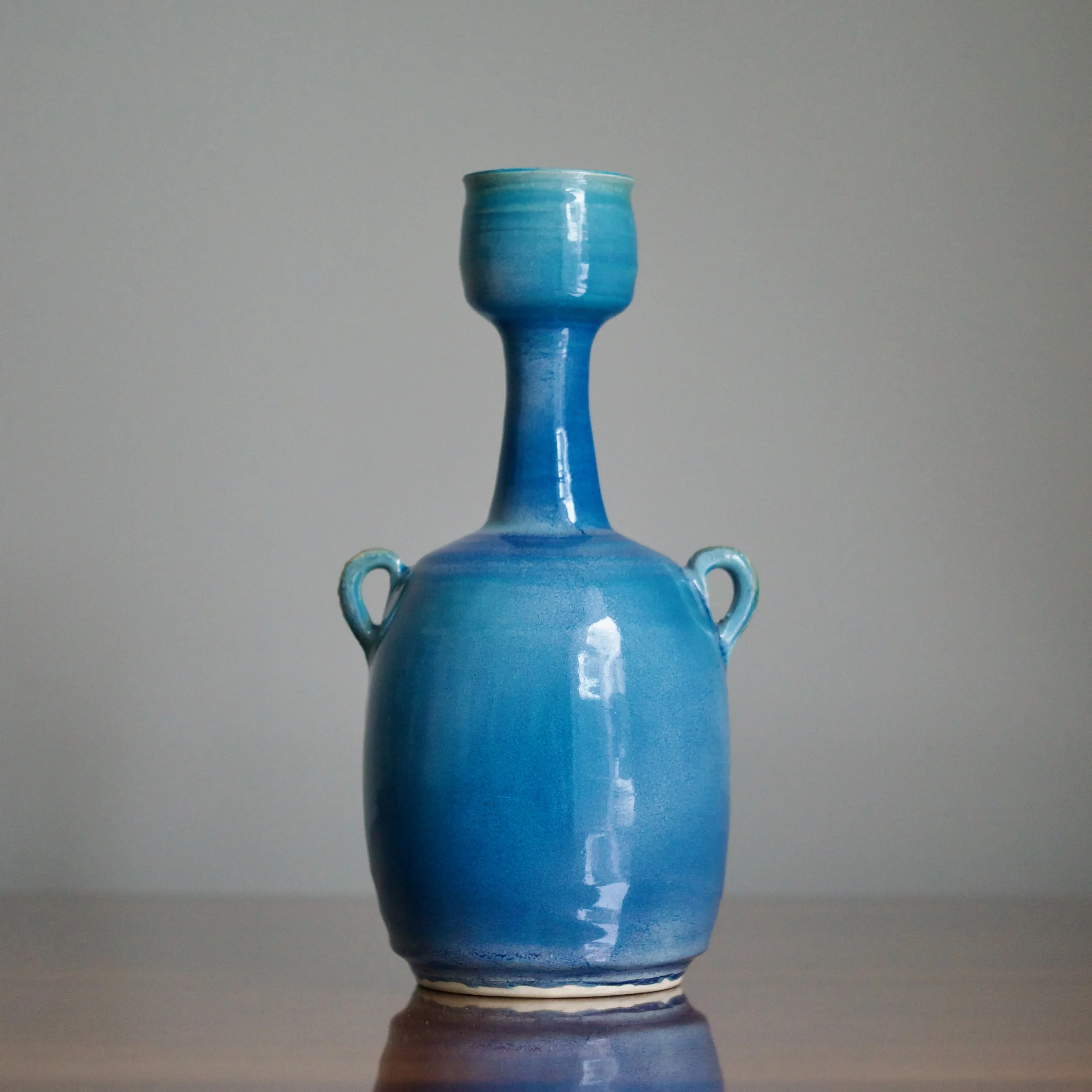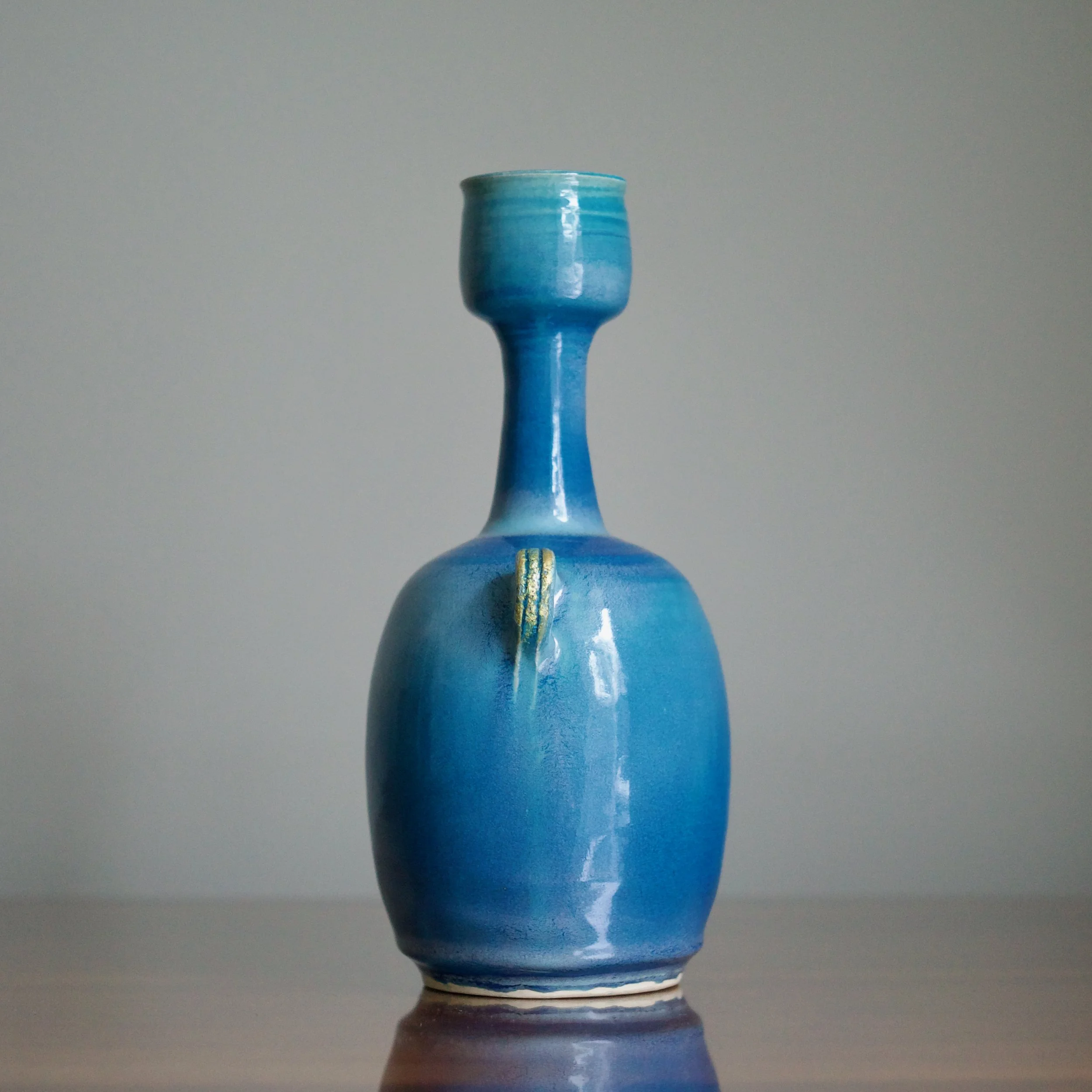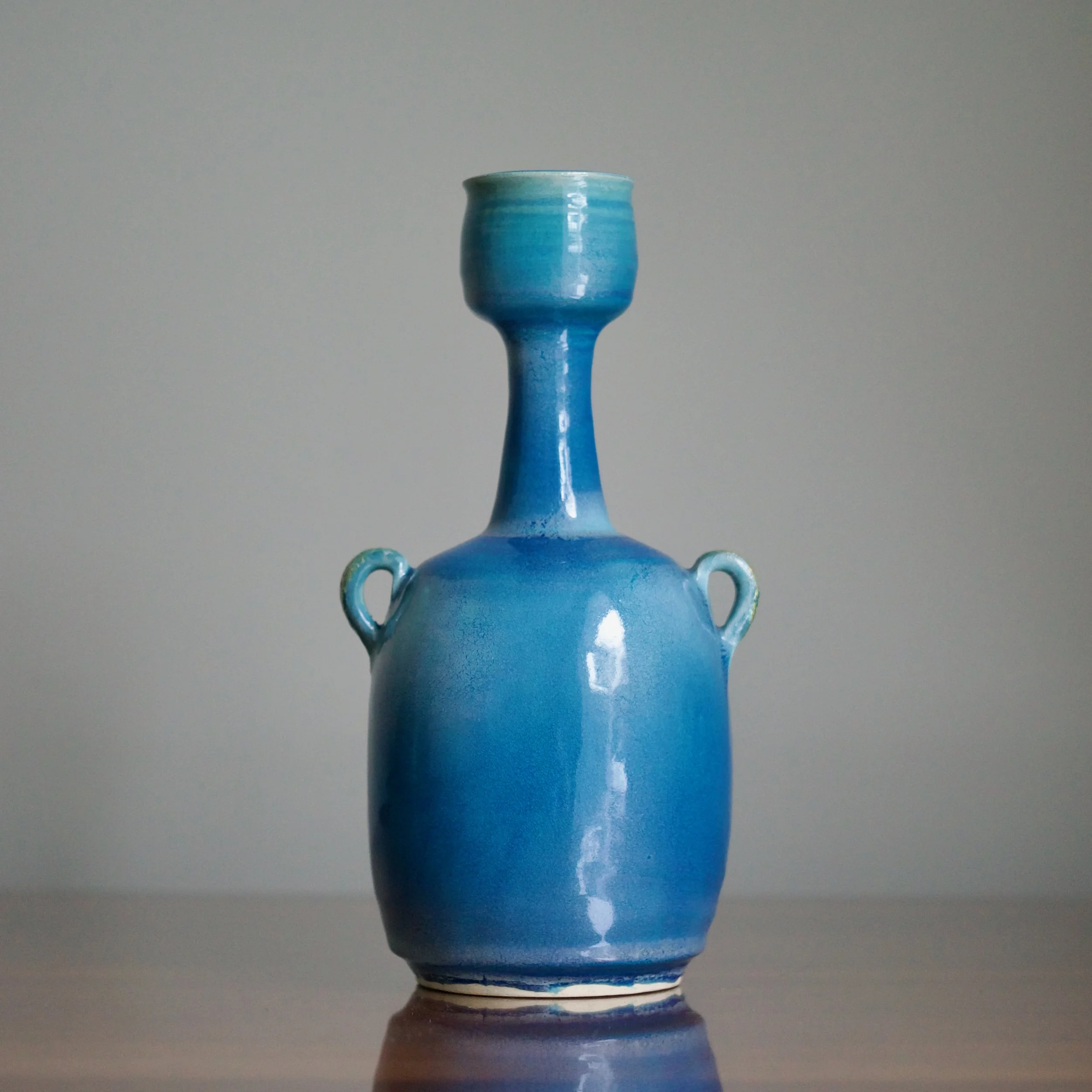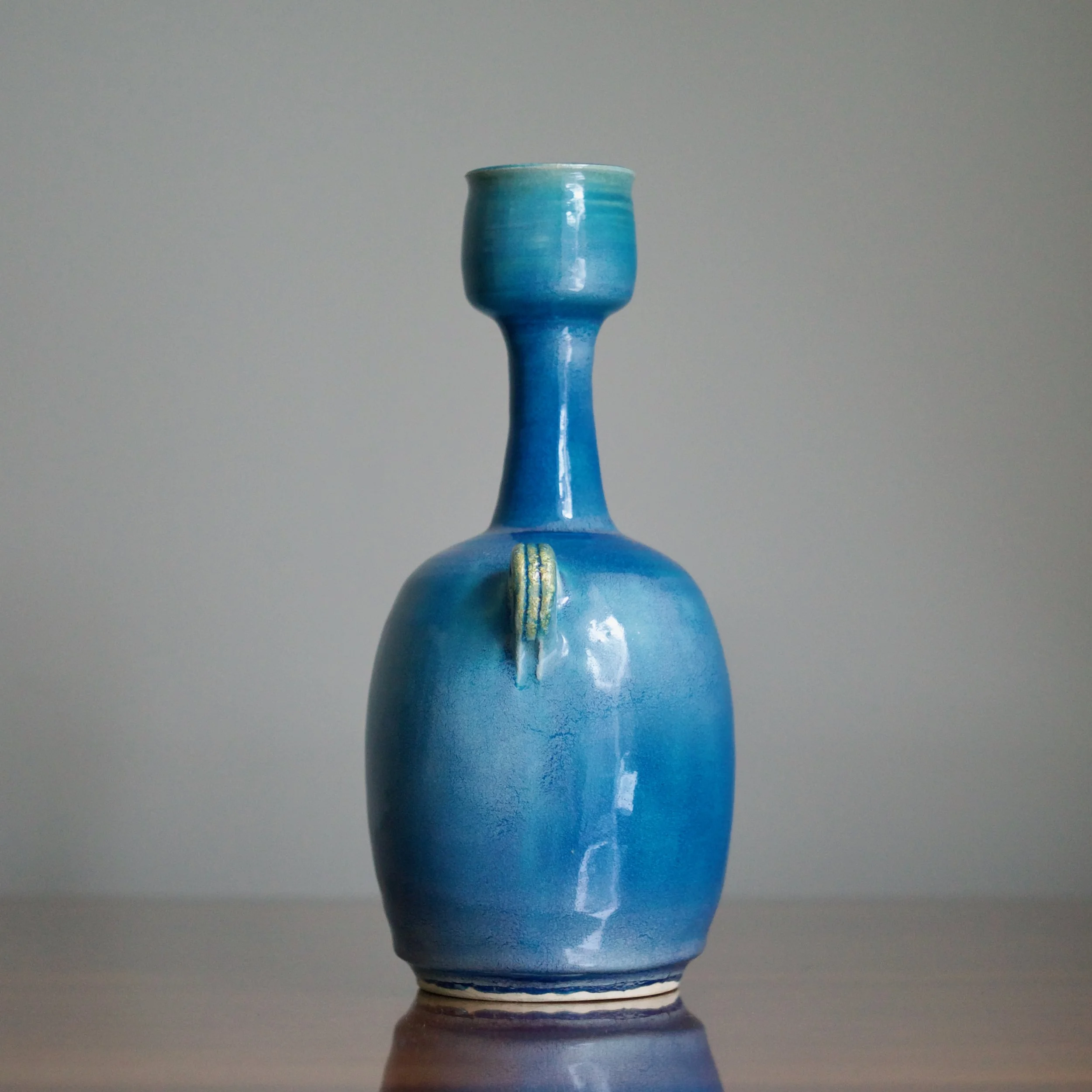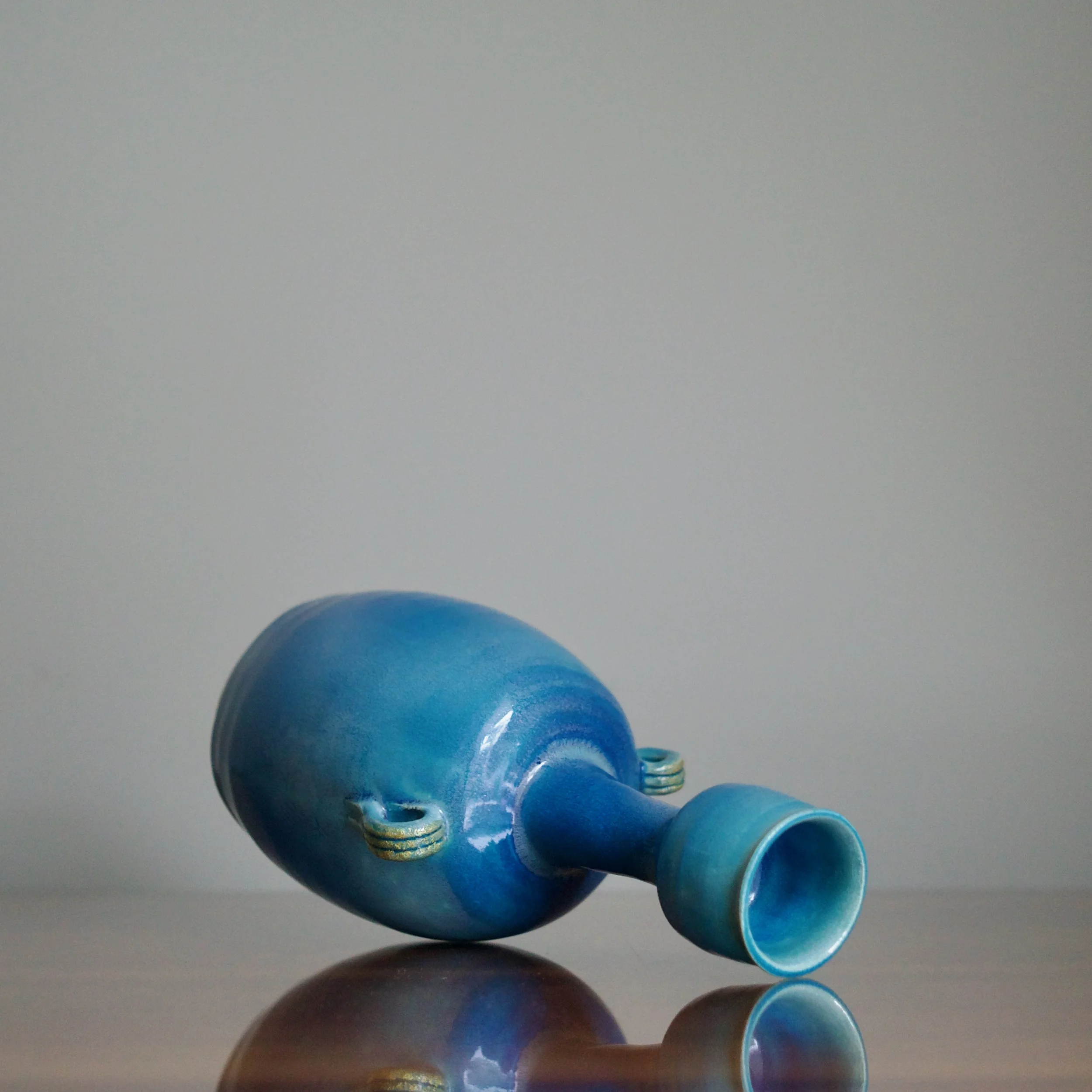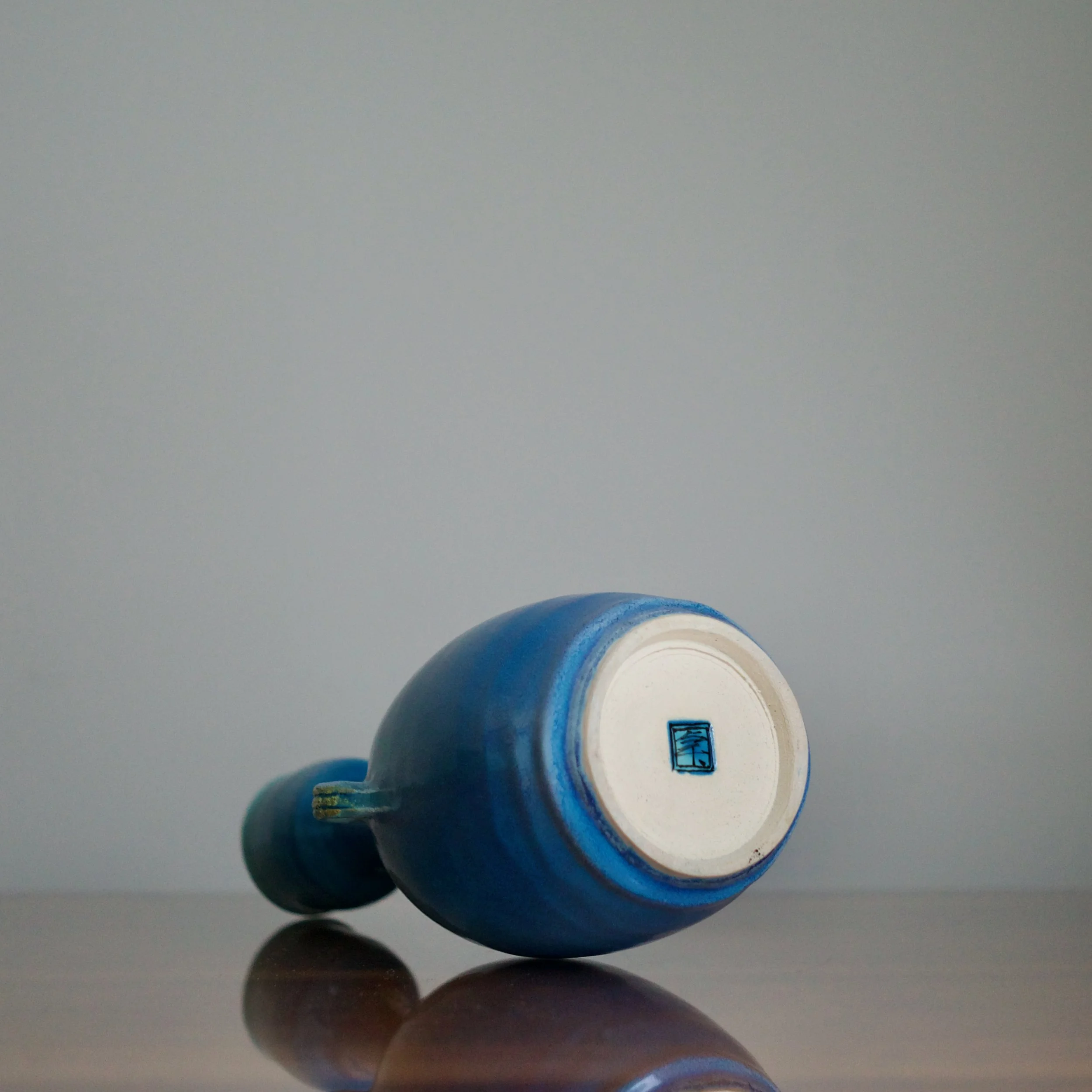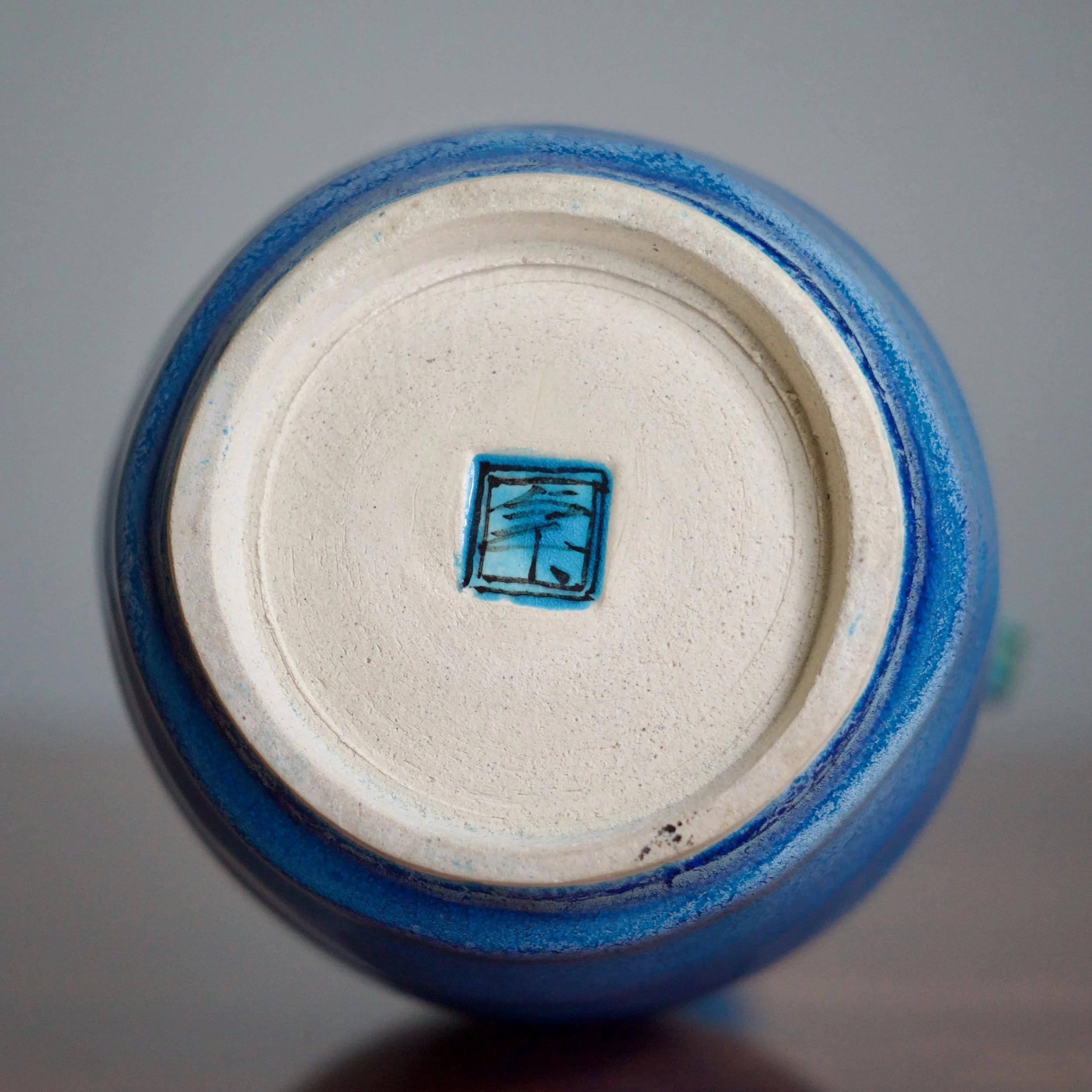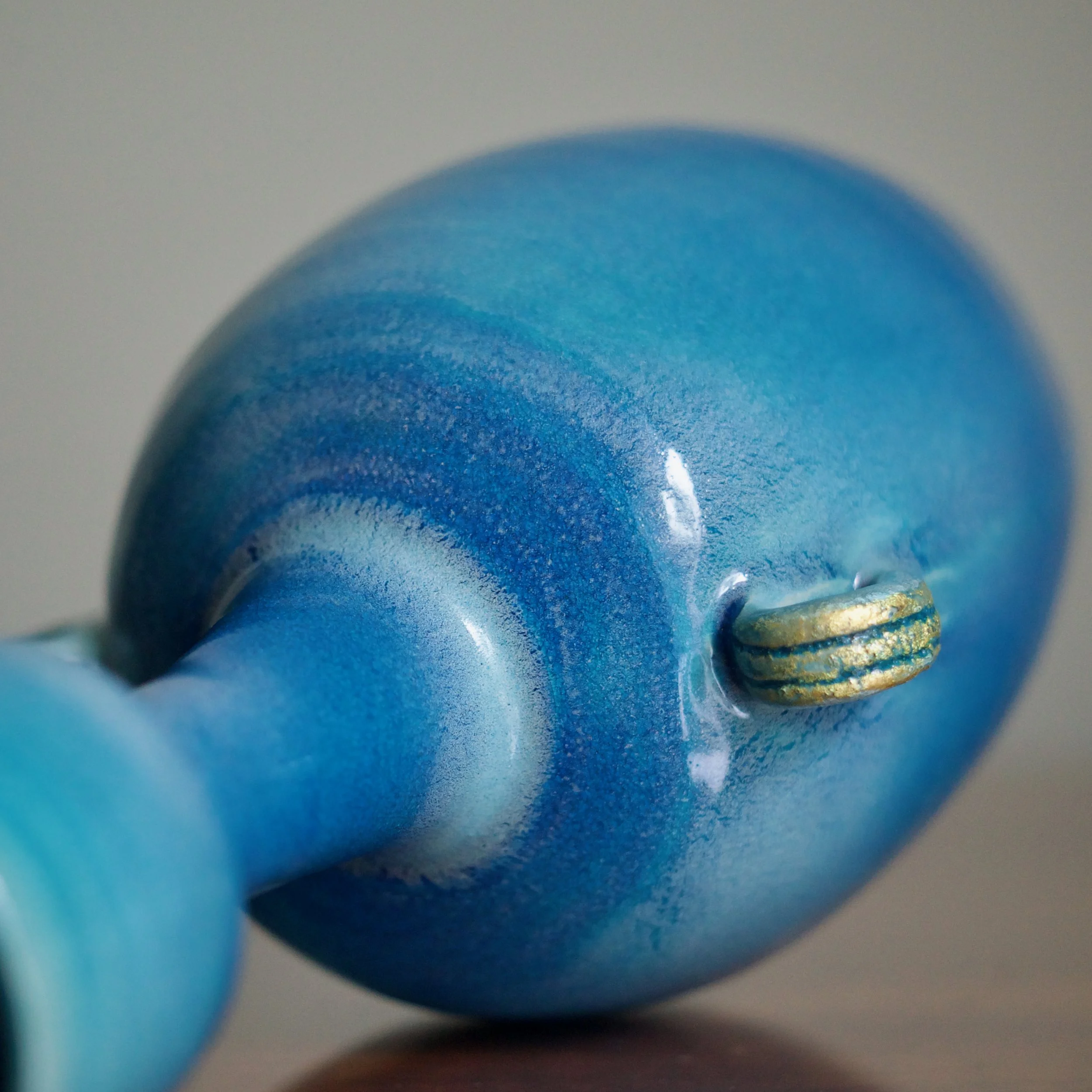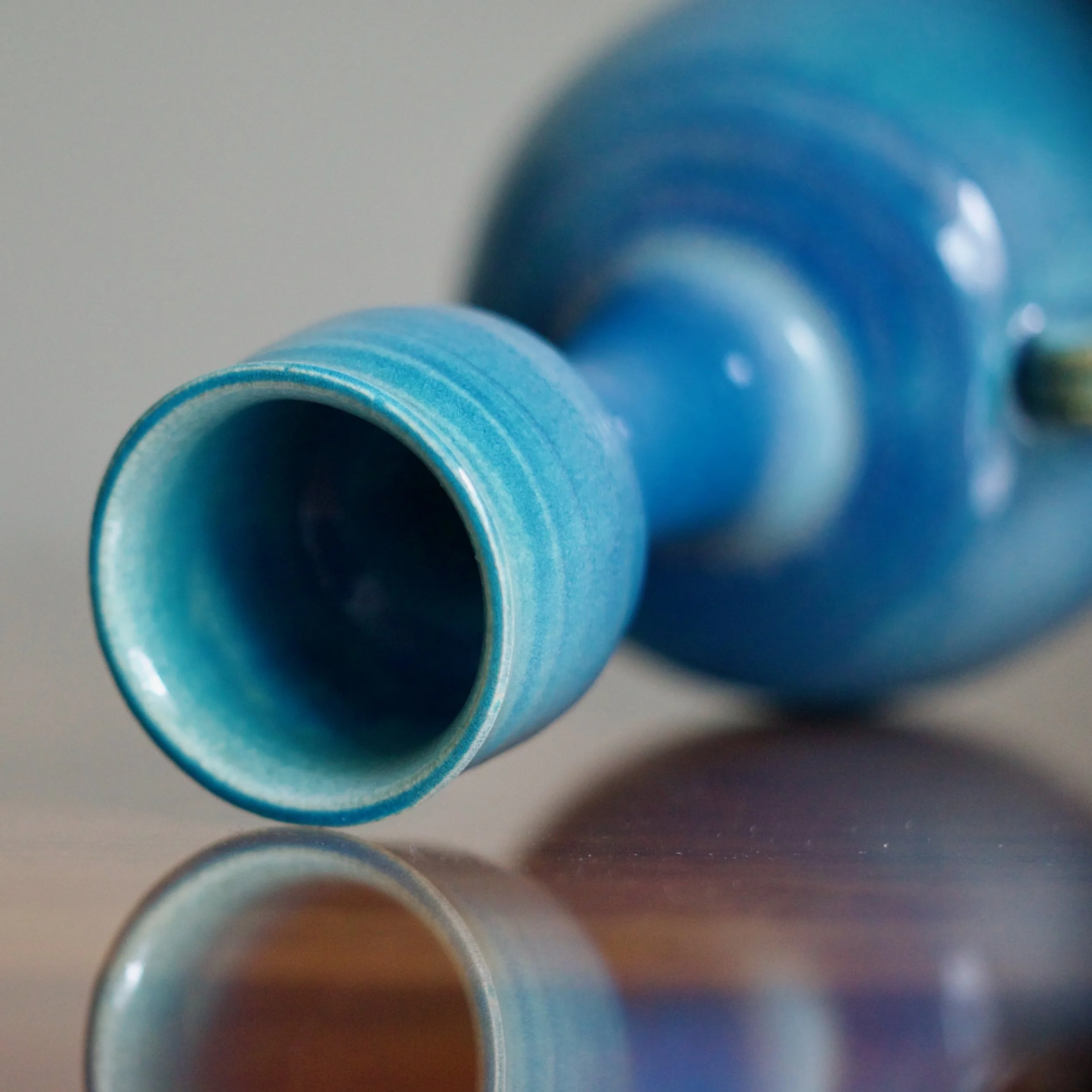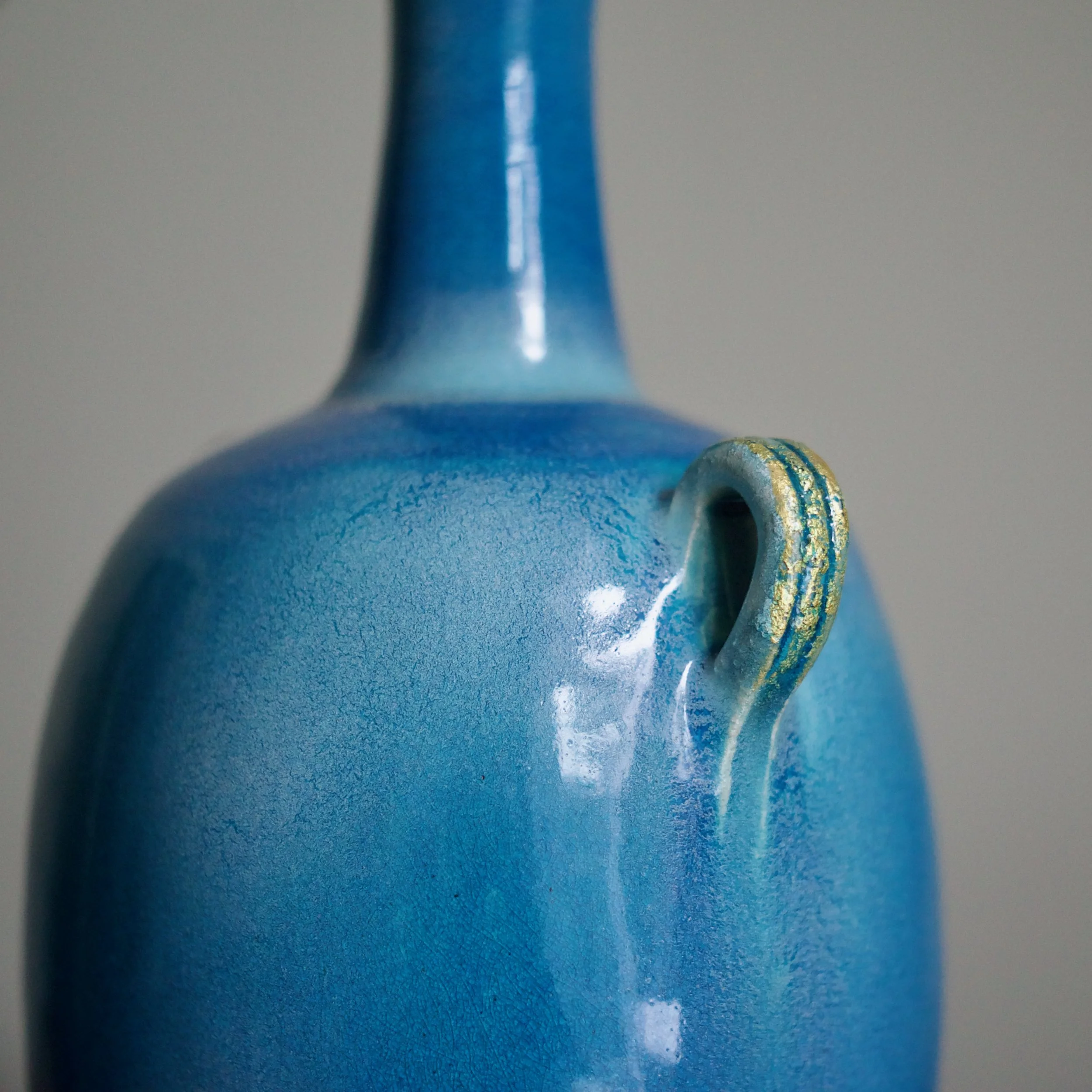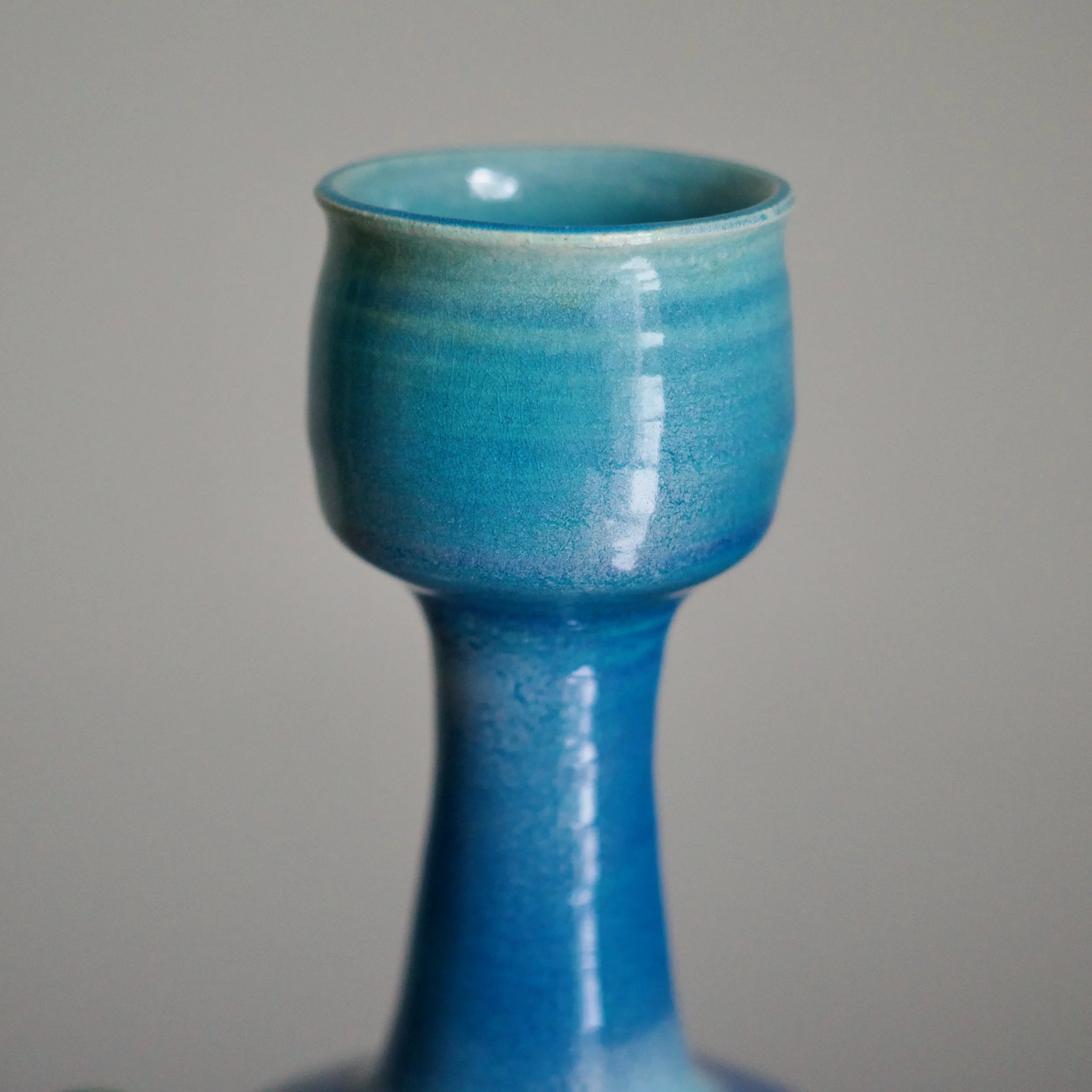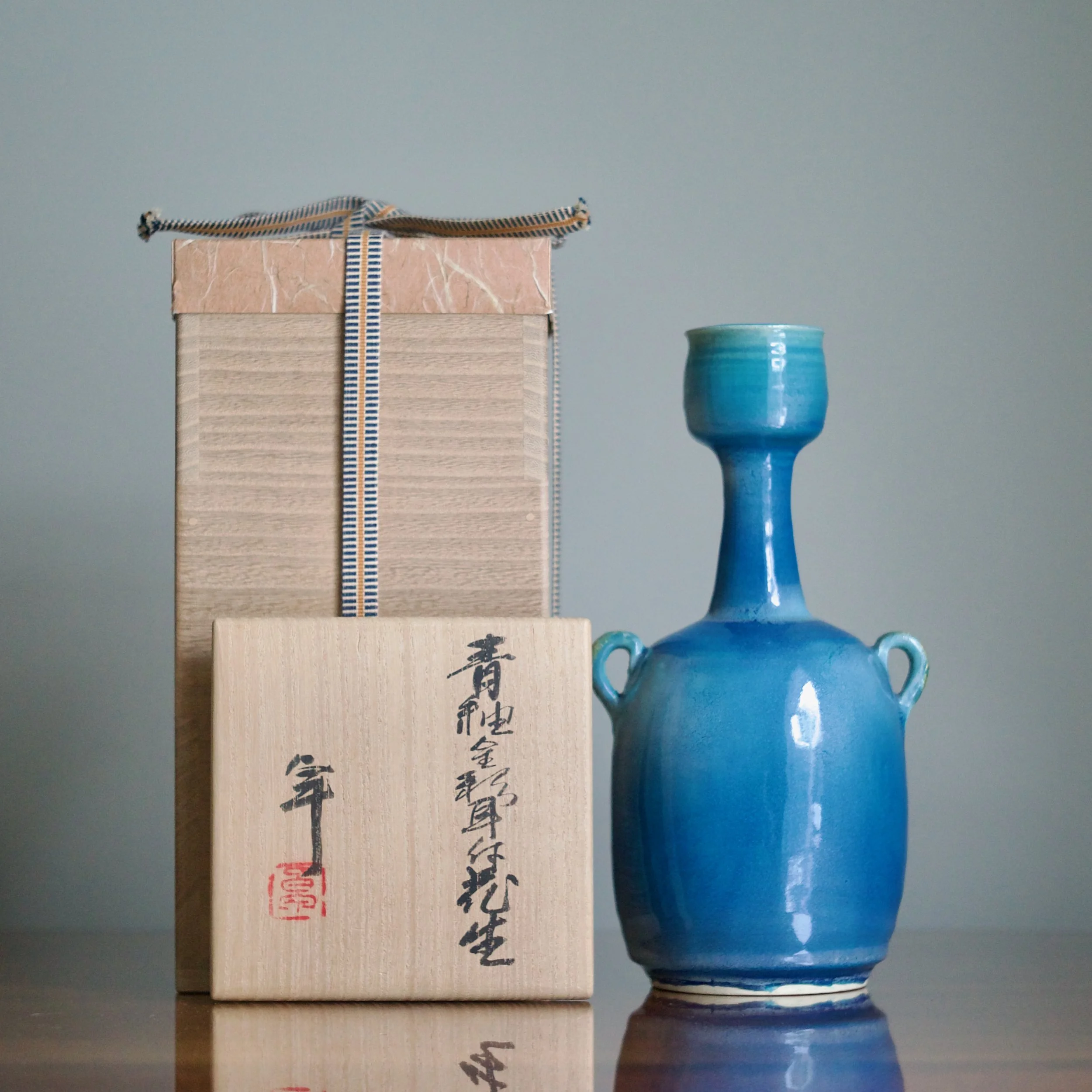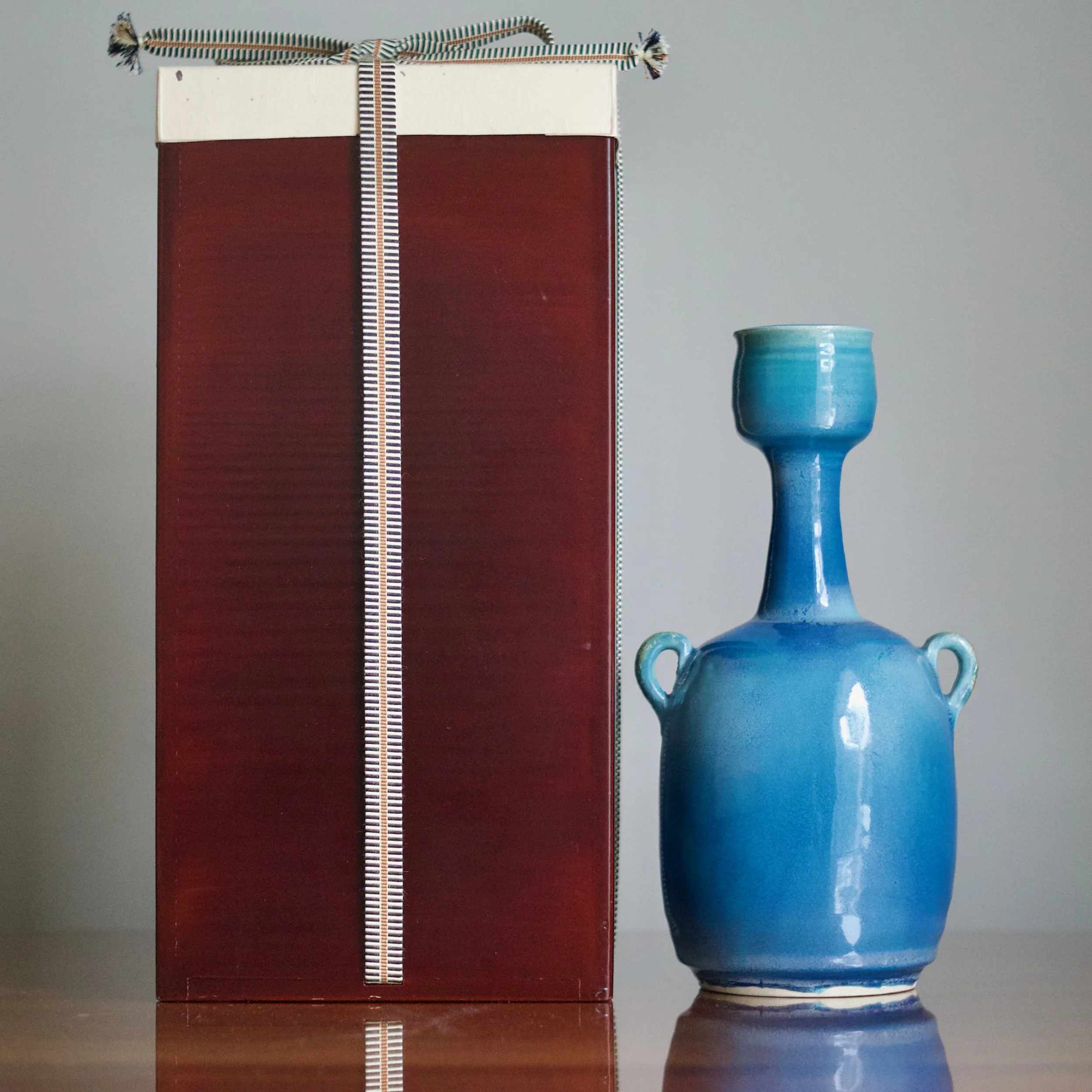“青釉金彩耳付花生” Blue glazed flower-shaped vase with gold ears
Kobeigama, Tajimi c. 1990’s; 9 3/8” tall by 5” wide.
$850 (CAD)
Kobeigama was established by the Kato family in 1804, and Kato Takuo was the 6th generation to fire pots at their kiln in Tajimi. While the five generations before him specialized mainly in Chinese inspired porcelains and celadons, Takuo’s inspiration came from further west. The vibrant ow-fire ceramics of the Silk Road interested Takuo, and their revival became his lifelong passion.
Takuo Kato dedicated years to the research and revival of Persian blue and lustreware. His exploration took him to Iran where he was able to replicate a lustreware without using the typical low-fire toxic tin and lead glazes. And, for his work incorporating those traditions into Japanese ceramics practice, he was designated a National Living Treasure in 1995.
This vase’s shape and vibrant blue glaze are inspired by Kashan bottle vases of 13th century Persia. The flower form of the stem and mouth are based on an abstracted tulip - in many ways a flower emblematic of the Silk Road since it spread east and west along its ancient routes. It symbolized enduring love in Persia, abundance in Ottoman Turkey, and paradise on earth throughout the Islamic world.
The vase's turquoise blue is considered one of Kato’s signature achievements since it recalls the blue-greens of Persian ceramics so successfully. And it is likely a copper rich glaze, fired in oxidation to achieve its celestial colour.
The dusting of gold on both lugs would normally be achieved with a final low-temperature firing. However, Kato’s decades of research and trial and error were considerable. And his lustre glaze techniques were one of his great successes. He may have developed a high-fired process that arrived at similar results, so beautifully incorporating a Persian sensibility into Japanese ceramics.
